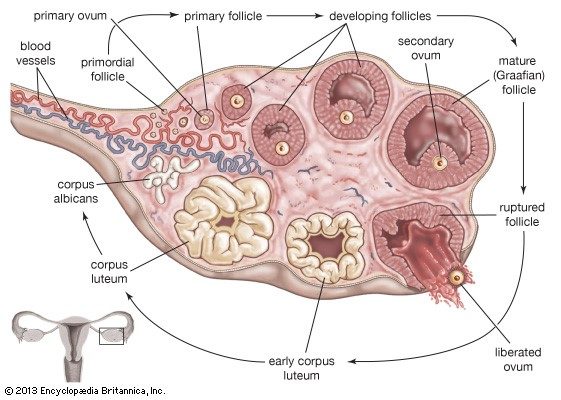By Angela Chu, pediatric resident at CHOC
When girls hear the words ovarian cyst, they think of pain and worry about needing surgery. However, there are many different types of cysts, and some are actually part of the normal monthly cycle.
What are ovarian cysts?
A cyst is sac filled with fluid. Ovarian cysts are relatively common in adolescents and are often found incidentally. They can be either simple or complex cysts and are most frequently “physiologic,” meaning they happen normally, because of the way the body functions. In menstruating females, the ovary goes through a cycle every month to prepare an egg to be released into the uterus. During the first part of the monthly cycle, the egg is enclosed in a follicle which grows for two weeks, and then ruptures to release the prepared egg (i.e. ovulation). The follicle then evolves into something called a corpus luteum which shrinks and then disappears within two weeks, in time for a new follicle to develop. Cysts can develop when the follicle fails to rupture to release the egg or if the corpus luteum fails to shrink.
If the cyst develops separate pockets of fluid, it’s a complex cyst. Some cysts contain material other than fluid, such as skin cells or blood.

Symptoms of ovarian cysts
Cysts are often found incidentally and don’t cause any symptoms. Some women may feel a sudden sharp pain in the lower abdominal region during the middle of their cycle. This corresponds to when the follicular cyst ruptures to release the egg, and is called “mittleschmerz.” The pain usually resolves fairly quickly. Larger cysts can cause pain simply due to their size, or when they rupture. In these cases, women might experience irregular periods, pelvic (lower abdominal) pain, bloating and a sense of fullness in the lower abdominal region. If the cyst is large enough, it can push on surrounding organs and cause increased urinary frequency, constipation, indigestion, or pelvic heaviness. If your daughter experiences any of these symptoms, speak to your primary care provider. Most common concerns can be managed by your primary care provider or an adolescent medicine specialist, who will determine if studies such as an ultrasound are necessary. If there is concern that a cyst may need to be removed, your provider will refer you to a gynecologist.
Complications of ovarian cysts
If the cyst becomes large and ruptures, it can lead to abdominal pain and bleeding, which can be minor or severe. There are times when the cyst can cause the ovary to twist on itself, leading to something called ovarian torsion. This can cause intermittent severe pain, nausea, vomiting, pallor and inflammation. Ovarian torsion should be evaluated immediately.
Treatment for ovarian cysts
Cysts can be visualized and monitored with an ultrasound. Cysts that are smaller than 6 cm are usually asymptomatic and will likely only be monitored and not require intervention. Most cysts resolve on their own without treatment. Depending on the size, your doctor may recommend a repeat ultrasound in 4-6 weeks to make sure the cyst has resolved on its own. Oral contraceptive pills, also known as birth control pills, can be given to prevent new cysts from forming; however, they do not make existing cysts go away. Follicular cysts that become symptomatic or keep coming back may require surgery for removal and are an indication to start a hormone pill. Rarely, some forms of cysts identified by ultrasound will need to be surgically removed.





